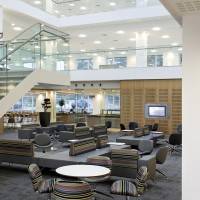November 19, 2013
2020 vision is a useless metaphor for far-sightedness in a number of ways
 The year 2020 is a mere seven years away. Yet the designers of the future workplace and those who invite them to talk about it are still referring to it as if it marks the next frontier of human endeavour and as if we weren’t already up to our collective armpits in the 21st century. The idea of 20/20 vision is considered, in ophthalmological circles at least, to represent “normal” visual acuity and is dependent on the sharpness of the retinal focus within the eye and the sensitivity of the interpretative faculty of the brain. In practical terms, this means it’s about seeing and interpreting what is directly in front of us at a distance of around 6 metres. So as a metaphor for farsightedness regarding the future of work or workplaces it’s always been a poor one. And as we get closer to the eponymous year, it becomes worse day by day.
The year 2020 is a mere seven years away. Yet the designers of the future workplace and those who invite them to talk about it are still referring to it as if it marks the next frontier of human endeavour and as if we weren’t already up to our collective armpits in the 21st century. The idea of 20/20 vision is considered, in ophthalmological circles at least, to represent “normal” visual acuity and is dependent on the sharpness of the retinal focus within the eye and the sensitivity of the interpretative faculty of the brain. In practical terms, this means it’s about seeing and interpreting what is directly in front of us at a distance of around 6 metres. So as a metaphor for farsightedness regarding the future of work or workplaces it’s always been a poor one. And as we get closer to the eponymous year, it becomes worse day by day.























November 21, 2013
What the death of the landline tells us about how we work
by Mark Eltringham • Comment, Flexible working, Technology
(more…)